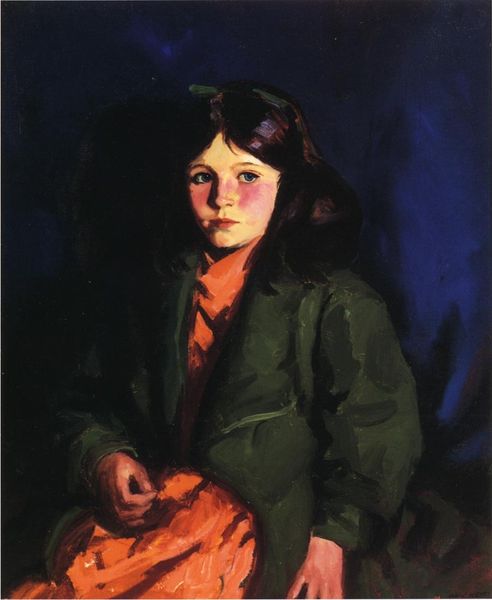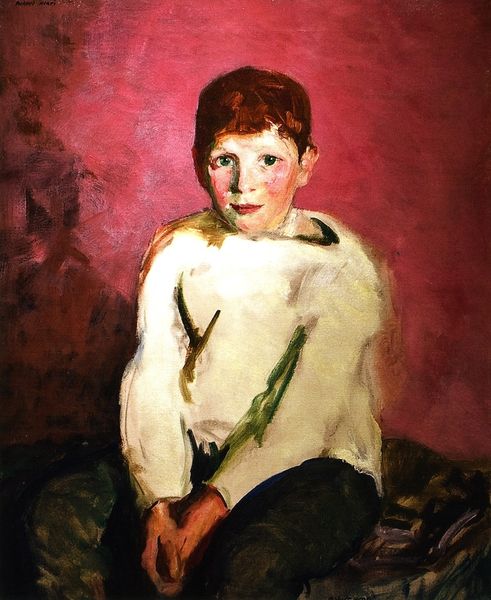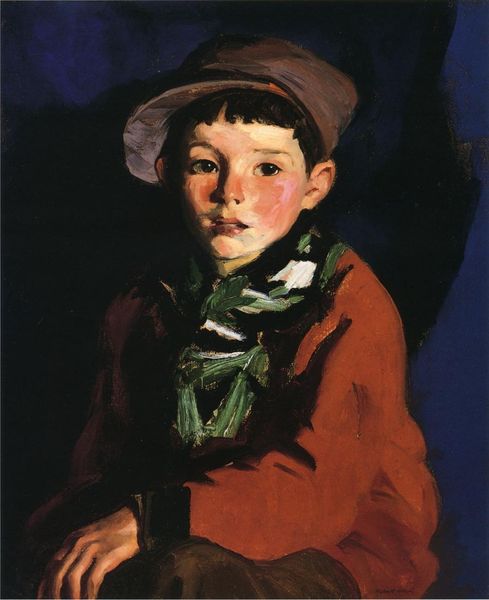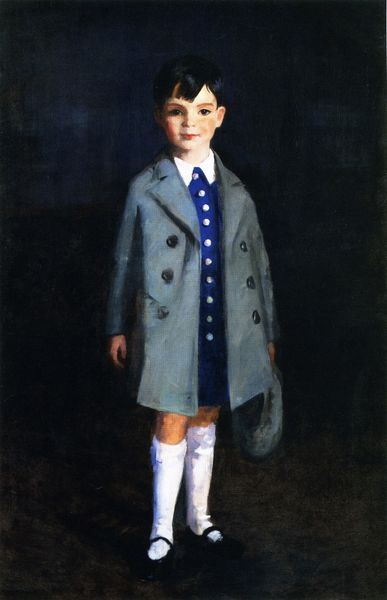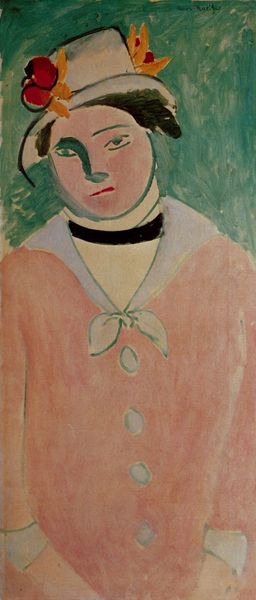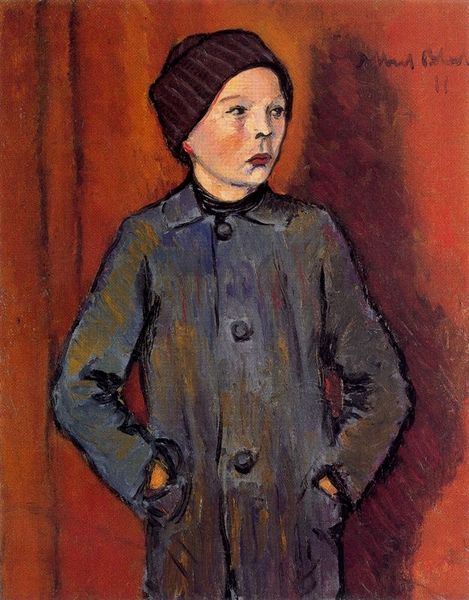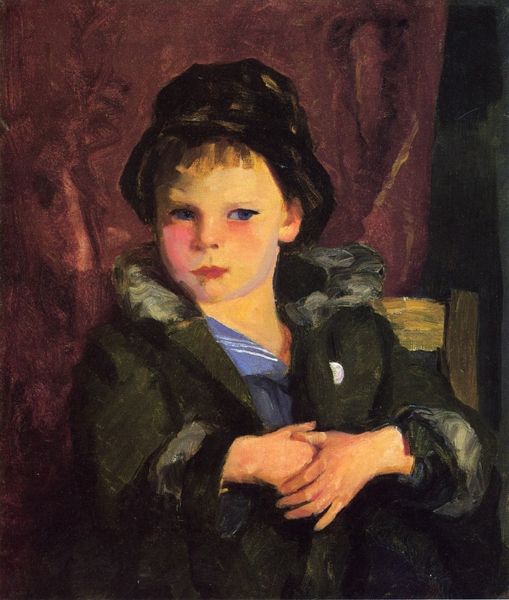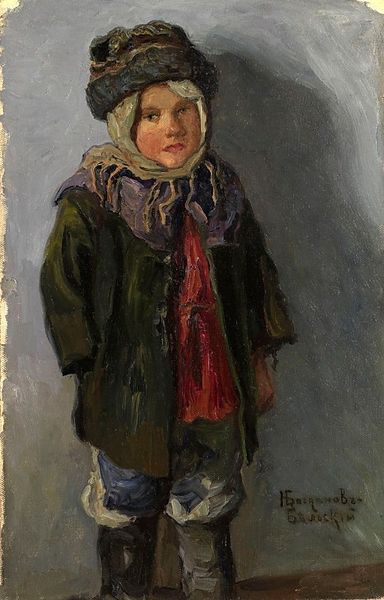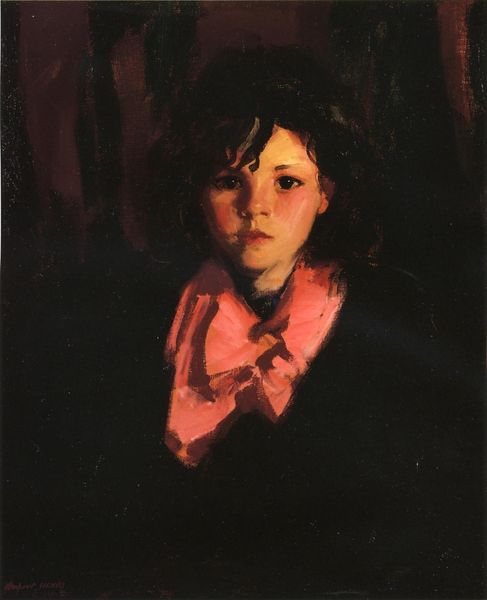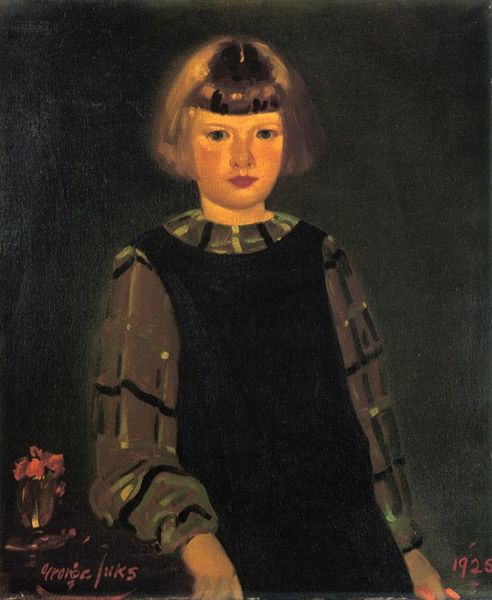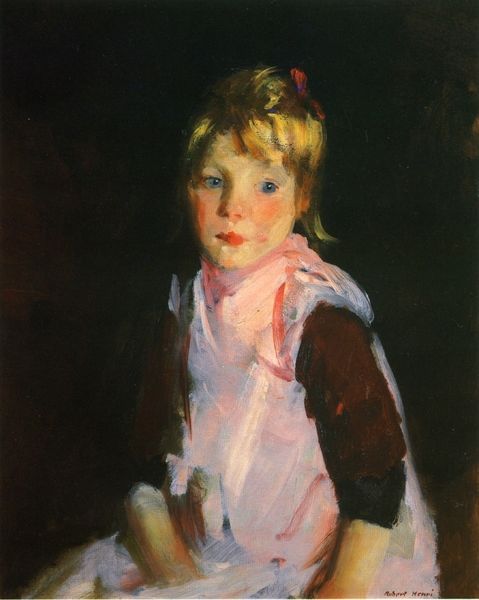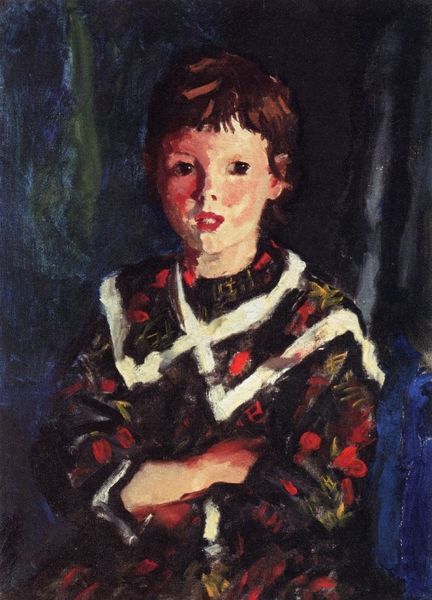
Dimensions: 44.75 x 39.5 cm
Copyright: Public domain
Curator: Look at this powerful piece from 1909, George Luks' oil painting, "Lily Williams". What strikes you first about it? Editor: She appears small, almost swallowed by that coat, and the colors are unexpectedly bright against the stark background, it is quite a compelling portrait of the subject. Curator: Luks, associated with the Ashcan School, often depicted everyday city life. This painting exemplifies their interest in the lives of ordinary people, but I am intrigued by the quick, almost slapdash strokes—very thick impasto, right? Do you think it was done "alla prima", "wet-on-wet"? Editor: Yes, it speaks to their desire to capture immediacy and the raw realities they observed around them, though one might criticize idealization. We must consider her social class in the context of that time— her gender, ethnicity. Curator: Precisely, considering Luks' other works, what could have been the social status of a child with such simple garments, but a bright coat? Is it handed down, thrifted, made from salvaged cloth? The gesture and fabric really draws my eye...it doesn't appear carefully tailored and highlights questions about textile availability and clothing production at the time. Editor: It’s this very tension between the aesthetic choices and social realities that make it so compelling. Notice the way she meets our gaze directly. It speaks to the resilience of children growing up amidst poverty, while demanding attention and presence. And to me, her bright coat contrasts the drabness often linked to the poor. Curator: You bring up a crucial point about their portrayal and her gaze—her directness demands a sort of attention. I'm curious, though, how this relates to labor. Could it signal labor taking place? How is her presentation related to labor for other girls and women around this era, in factories or even as domestic servants? What implications about labor are held inside these strokes? Editor: These brushstrokes! You're spot-on! They tell tales not just of artistic creation but echo industrial movement and human endeavor under grueling conditions. Curator: By focusing on both visual technique and those social stories interwoven, this allows a layered reading, enriching our comprehension considerably, wouldn't you agree? Editor: Absolutely, seeing both process and her complex location enriches how the image might act, or create discourse now, expanding its story across temporal contexts.
Comments
No comments
Be the first to comment and join the conversation on the ultimate creative platform.
